My Thoughts about that August Jobs Report
by Wolf Richter • Sep 5, 2025 • 1 Comment
Federal & State Governments Shed 28,000 Jobs in August. Private-sector hiring machine slows, waiting for clarity, but layoffs remain very low.
By Wolf Richter for WOLF STREET.
Total nonfarm payrolls rose by 22,000 in August, to 159.5 million jobs; July job gains were revised up to 79,000; June was revised to a loss of 13,000 jobs.
The three-month-average job gain slowed to 29,000, according to the Bureau of Labor Statistics today.
Hefty job losses at federal and state governments.
Losses of civilian jobs at the federal government reached 15,000 in August. Over the past three months, the federal government shed 34,000 jobs (three-month average job loss of 11,000). Since January, the federal government has shed 97,000 civilian jobs.
The government flipped from a job creation machine through 2024 to a job shedding machine in 2025.
This does not include jobs at government contractors, whose job losses due to canceled or paused government contracts show up in private sector categories, such as Professional & business services, Information, and other sectors.
State governments shed 13,000 jobs in August, the fourth month in a row of job losses. Over those four months, state government shed 33,000 jobs.
Combined, federal and state governments shed 28,000 jobs in August and 56,000 jobs over the past three months.
Excluding federal and state governments, employers created 50,000 jobs in August and 144,000 over the past three months, or a three-month average of 48,000 additional jobs.
The first chart reflects total job gains and losses, monthly (blue columns) and three-month average (red line). The second chart shows the same but without federal and state jobs.
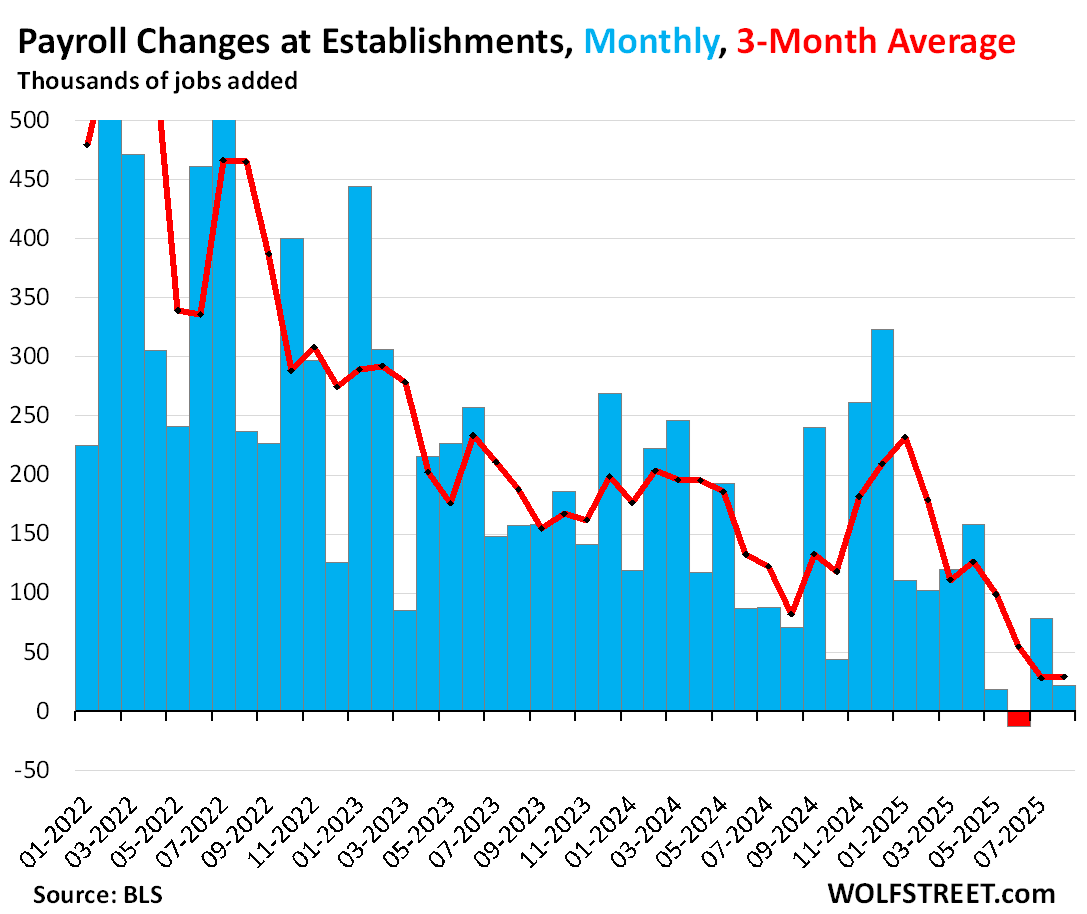
Here we’re looking at payroll changes without federal and state governments. So this is a fairly slow job growth, even without the distortions from the federal and state jobs.
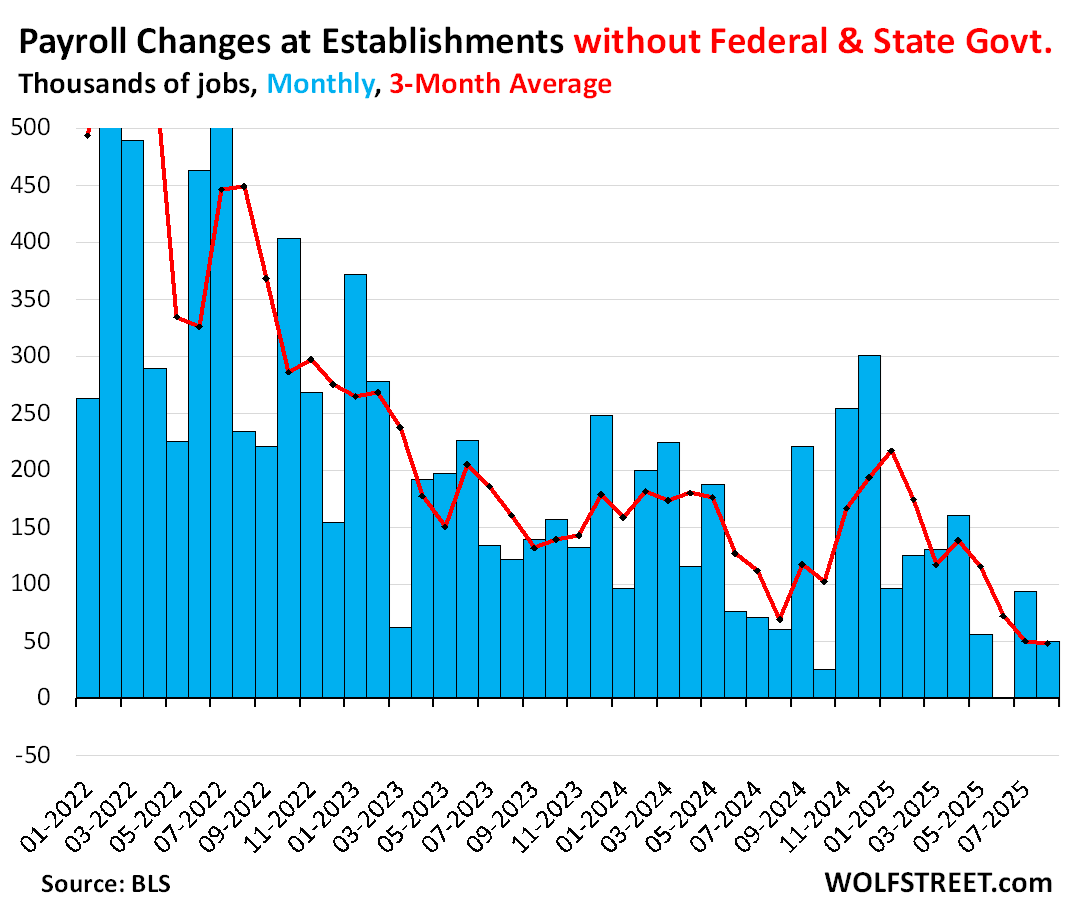
Civilian jobs at the Federal government have dropped to 2.92 million in August, the lowest since May 2023, undoing much of the 2022-2024 hiring binge.
But these are workers on government payrolls, and they do not include the workers who are employed by companies and work on government contracts. The job shedding from the efforts to reduce government spending has spread into the private sector and shows up in private-sector categories:

The share of civilian jobs at the federal government dropped to 1.83% of total nonfarm payrolls, the lowest in the data going back to 1939.
In 2022-2024, the substantial job growth at the federal government contributed to total job growth. This year, the opposite has been the case – growth in total payrolls was weakened by the substantial decline in federal government jobs.
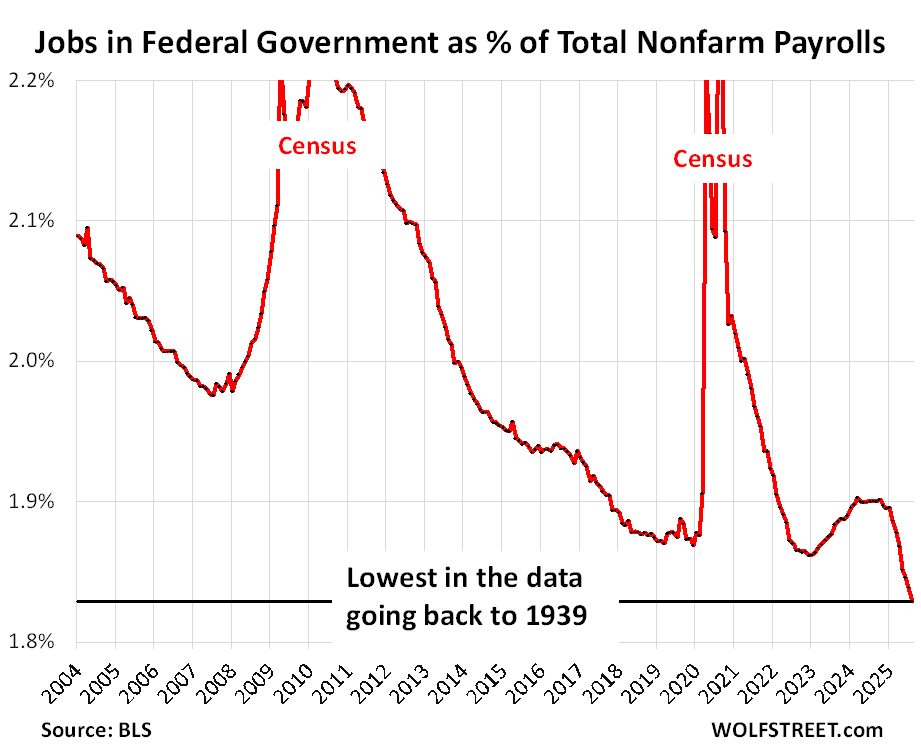
Average hourly earnings rose by 0.27% in August from July (3.3% annualized, blue), according to the establishment survey by the BLS today.
The three-month average growth (red) rose by 3.4% annualized. Both, the monthly gain and the three-month average gain where a deceleration from the growth rates in July, but were above the growth rates in June.
Wage growth is at the top end of the range that prevailed during the strong labor market in 2018 and 2019 and above prior years.
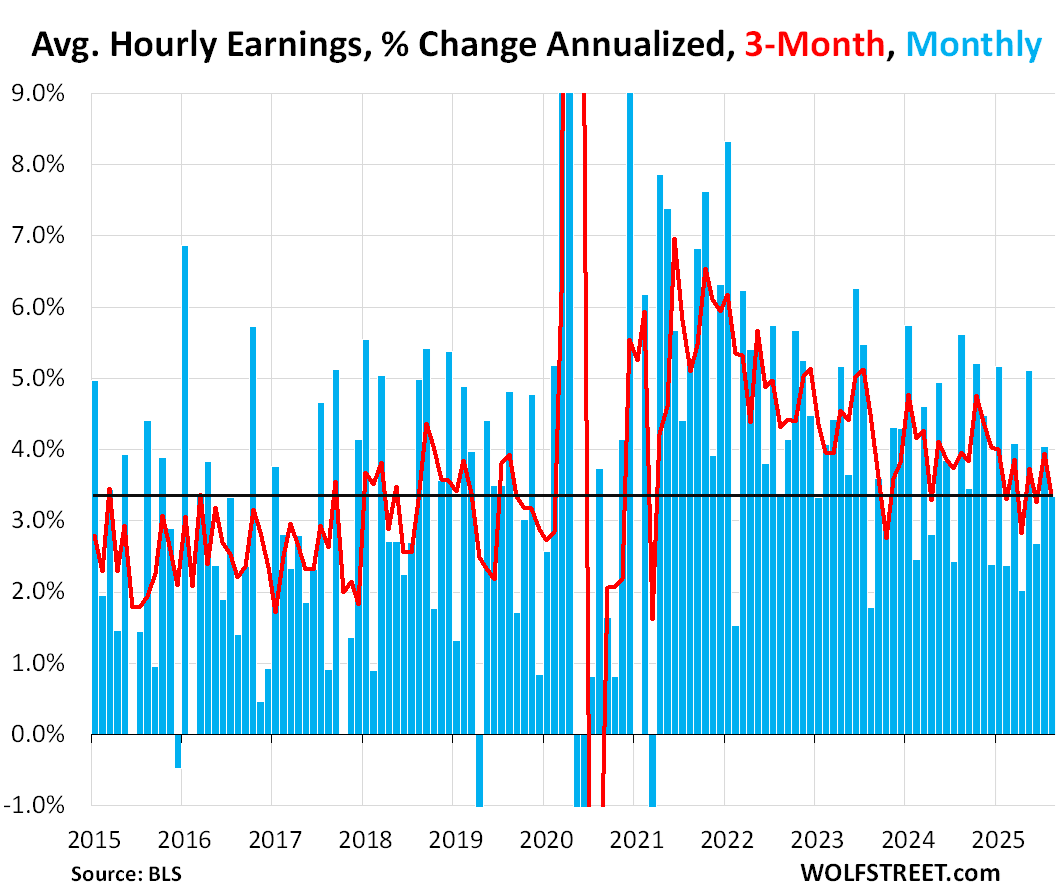
Year-over-year, average hourly earnings rose by 3.7%, a deceleration from July, and still abve the highs before the pandemic.
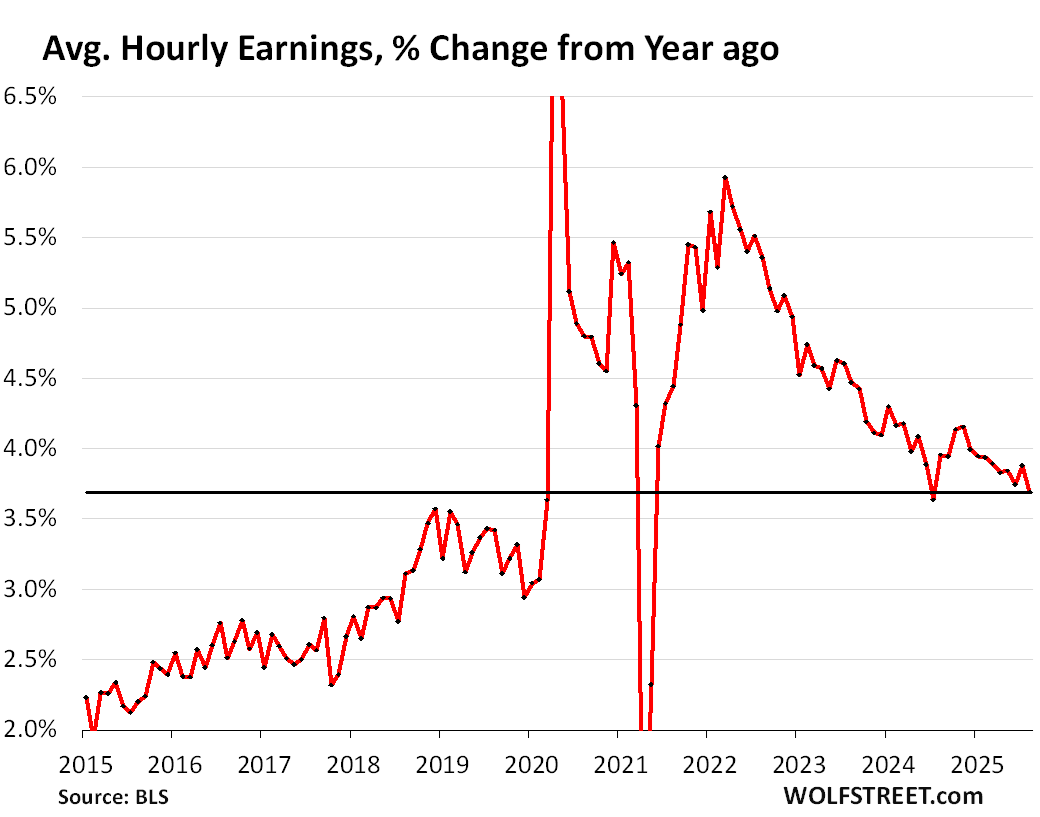
Unemployment rose by 148,000 in August to 7.38 million people who were actively looking for a job during the survey period.
But the labor force surged by 436,000 in August to 170.8 million (working people and unemployed looking for a job), which played a big role in the increase of the unemployed, as not all of the new entrants in the labor force were able to find jobs, and so unemployment rose.
The headline unemployment rate (U-3) ticked up by 7 basis points to 4.32% in August, up from 4.25% in July. Since June 2024, the unemployment rate has been in the historically low range of 4.01% to 4.25%. August was the first reading above 4.25%.
An unemployment rate of 4.3% is historically relatively rare and indicates a balanced labor market. And it remains below the Fed’s median projection at the June meeting of 4.5% for the end of 2025.

What to make of it?
Heavy job losses at the federal and state governments (28,000 in August, 56,000 over the past three months) plus some job losses at government contractors are weighing on the labor market, where job creation by the private sector has slowed sharply.
Then there is the crackdown on illegal immigration: For example, construction shed jobs in part due to the crackdown on illegal immigrants, many of whom work in construction. Just today, the government announced that 475 illegal immigrants were arrested at the construction site of a Hyundai EV battery plant in Georgia. The raid followed other raids on construction sites. Construction companies have complained about scared workers not showing up for work and not being able to find workers. And these are contributing to job losses in construction. They’re not the only factor, but they contribute. Since April, the construction sector has lost 42,000 jobs, after a large surge.
But job openings in the construction sector have risen in recent months, per the JOLTS data.
And yet, layoffs remain historically low – this has been a theme for over a year: Employers are laying off workers at a historically low rate, same rate as a year ago, and below two years ago, as we can see in the initial applications for unemployment insurance.
In addition, people have stopped quitting jobs, and so the churn in the labor market has calmed down a lot, with employers hanging on to their people, and people hanging on to their employers.
So there are fewer open slots, and it takes longer to find a suitable open slot than it did during the tight labor markets in 2018-2019 and in 2022-2024. We can see that in the number of people who continue to claim unemployment benefits. But those continued claims for unemployment insurance, though up from the tight labor markets, are still below the record lows of the decades before 2018.
So the private-sector hiring machine has slowed down for a variety of reasons — and different reasons in different sectors — with many decision makers putting projects on hold, waiting for clarity perhaps. But they’re not laying off workers. |











